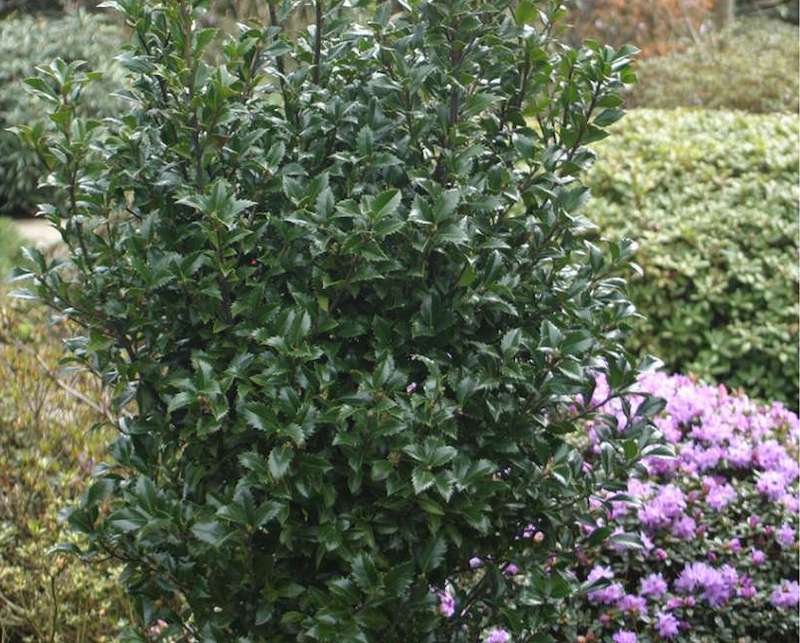Blue Holly (scientific name Ilex x meserveae) is an attractive broadleaf evergreen shrub originating from the Northeastern United States. This hybrid was designed to have the hardiness of Ilex aquifolium plus the beauty of Ilex rugosa. Common names for this plant are Blue Holly, Meserve Holly, and Meserve hybrid. It is named after hybridizer Kathleen Meserve who created many different cultivars like the ‘Blue Prince’, ‘Blue Princess’, ‘Hachfee’ and ‘Heckenstar’.
Blue Holly has prickly, glossy, blue-green leaves that reach 1-3 inches long. These hollies can grow 6 to 8 feet tall and wide, making them ideal for borders, fences, and screens. The fruits of the female ‘Blue Princess’ Holly attract desirable wildlife like songbirds. You will love having this glossy blue-green shrub in your landscape.

What You Need To Plant Blue Holly
- Shovel
- Hose
- Water source
- Mulch
Where to Plant Blue Holly
Select a location that gets full sun to part shade, at least 4-6 hours of sunlight daily. Blue Holly prefers part sun and afternoon shade in areas that receive intense sunlight. The soil should be moist, well draining, and slightly acidic. Average soil is fine–Blue Holly tolerates soils high in organic matter, loam, clay, and sand.
Blue Holly Spacing
Blue Holly requires roughly 6-12 feet of space. For best results, there should be adequate airflow between each plant. Spacing your Blue Holly 6 feet apart will provide you with a great privacy screen as the shrubs mature.

Steps To Plant Blue Holly
Step 1 - Check the depth of your hole by placing the plant’s root ball inside. The root ball should be slightly above, or even with the soil surface. Situate the plant how you’d like to view it. Use the nursery container to determine the size of hole you will need to dig. The hole should be about two times wider than the nursery pot and just as deep.
Step 2 - Use your fingers to tease out the roots a bit to free them up. This will encourage the roots to establish more easily in the surrounding soil. Place your holly in the hole, and gently pack in the dirt to remove air pockets.
Step 3 - Backfill the hole with the same soil you’ve dug up. Continue packing in soil until you have covered the top of the root ball with about ½” of soil. If your soil is very poor or it’s too alkaline, you may want to add a layer of compost but this is not absolutely necessary.
Step 4 - Water the plant deeply, thoroughly soaking the soil. Keep your Blue Holly well watered until it’s established, usually after two growing seasons.
Step 5 - This shrub will benefit from a few inches of bark mulch, about 2-3” thick. Keep the mulch away from the trunk to prevent fungal issues.
When To Plant Blue Holly
Plant or transplant your Blue Holly shrub during the early fall, before new growth appears. This will give it time to settle in before the weather turns cold.

Transplanting Blue Holly
When transplanting your Blue Holly, ensure that the process is as gentle as possible to avoid shocking the plant. Keeping the plant moist through the whole process will also help to avoid any possible shock. Dig up your shrub at a good distance away from the trunk, around 2 or 3 feet. This will avoid root damage and will provide your plant with familiar soil in its new location.
You should transplant your Blue Holly on a cool day in the morning or evening so the plant doesn’t wilt right away. You’ll want to select a location that has soil, sun, and drainage conditions similar to its previous home. Dig a new hole that’s large enough for the holly’s root ball, and keep the plant well watered until it gets well established and shows new growth.
 |
Author Chris Link - Published 2-06-2023 |
